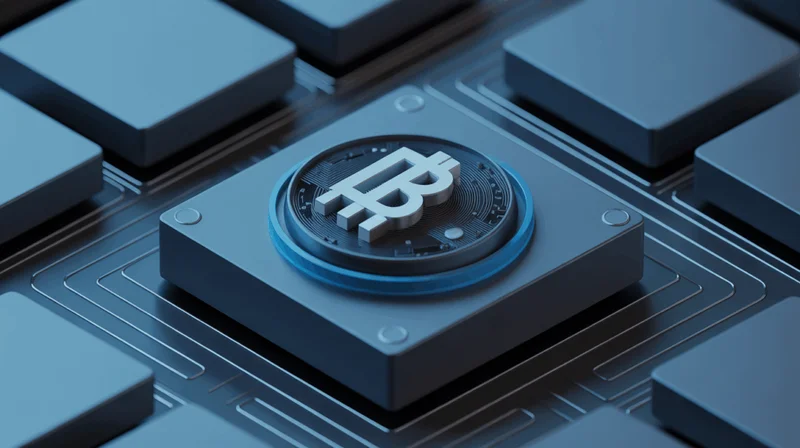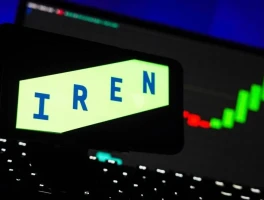IREN's AI Pivot: Genius Reinvention or Just Chasing the Next Bubble?
So, let me get this straight. The hottest new thing in the AI gold rush isn't some slick startup from a Stanford dorm room. It’s an Australian Bitcoin mining company. You know, from that other bubble. A company that, until recently, was all-in on magic internet money and now wants us to believe it’s the second coming of Nvidia.
Give me a break.
I’ve been watching this space long enough to know a desperate costume change when I see one. IREN Limited, formerly Iris Energy, spent years building data centers in the middle of nowhere—Canada, Texas—to do one thing: mine Bitcoin. A power-hungry, speculative, and ultimately useless endeavor. Now, with the crypto winter still fresh in our minds, they’ve suddenly seen the light and found a new religion: Artificial Intelligence.
And Wall Street is eating it up with a spoon. The stock has gone on a tear that would make a meme stock blush, up over 470% this year. Why? Because IREN announced it was spending a king’s ransom—$674 million—on a boatload of Nvidia’s shiniest new toys, the Blackwell and Hopper GPUs.
It’s like watching a band that played nothing but death metal for a decade suddenly release a bubblegum pop album because that’s what’s topping the charts. You have to ask: Do they even know how to play this music? Or are they just hoping the new outfits and slick production will distract everyone from the fact that they’re completely out of their element?
From Crypto Grifters to AI Saviors?
Let’s be real. Running a Bitcoin mine and running a high-performance AI cloud service are not the same thing. Not even close. One is like running a massive, brain-dead warehouse where the only goal is to solve the same math problem over and over, faster than the next guy. It’s brute force. The other is supposed to be about providing sophisticated, high-stakes computing power to some of the most advanced tech companies on the planet.
It requires a different kind of expertise, a different kind of infrastructure, and a different kind of sales and support team. So, where did IREN get this expertise overnight? Did they all take a weekend course on Coursera? Or are we just supposed to assume that because they know how to plug in a bunch of power-hungry machines, they’re suddenly ready to compete with Amazon AWS and Microsoft Azure?

The company talks a big game about its data centers being powered by "100% renewable energy." That’s a nice little PR line, isn't it? It lets them slap a green sticker on what is, fundamentally, one of the most obscenely energy-intensive business models ever conceived. First for Bitcoin, now for AI. It doesn't matter what the computers are computing; they still need enough electricity to power a small city. Offcourse, it's "green" electricity, so we're all supposed to feel good about it.
This whole pivot feels less like a strategic evolution and more like a frantic scramble for survival. The crypto narrative was dying, so they grabbed the nearest, shiniest life raft, and that life raft had "AI" painted on the side in big, glowing letters. And for now, it's working. The stock is flying, the Reddit crowd on Wallstreetbets is buzzing, and analysts are tripping over themselves to call it the next big thing. But what happens when the tide goes out?
Chasing the Nvidia Dragon
The numbers are, admittedly, staggering. IREN dropped $674 million on 12,400 of Nvidia's top-tier GPUs. This isn't chump change. This is a bet-the-company move. They claim they’ve already secured contracts for 11,000 of them, representing about $225 million in annualized recurring revenue (ARR). Their big, hairy, audacious goal is to hit $500 million in ARR by the first quarter of 2026.
Sounds great on a press release. But who are these customers? The details are conveniently scarce. Are these rock-solid, multi-year contracts with established AI labs? Or are they short-term deals with a bunch of fly-by-night AI startups that are just as caught up in the hype as IREN is and might not even exist in 18 months? There’s a huge difference.
And the stock performance—IREN Stock's 50% Spike Powered By Nvidia GPUs—is pure speculative mania. It’s not based on profit. It’s not based on a proven track record. It’s based on a story. A story about a company perfectly positioned to cash in on the AI revolution. It’s a story that’s easy to sell, especially when you throw Nvidia’s name around.
This is the part of the cycle where everyone loses their minds. You see it in the "bullish option flow" and the insane trading volumes. It’s not investors making careful, long-term decisions; it’s gamblers placing bets on a roulette wheel. This is a bad sign. No, "bad" doesn't cover it—this is a five-alarm dumpster fire of a warning signal. Every company is doing this now, just slapping an "AI" label on whatever they do. My local pizza place will probably announce an AI-powered pepperoni distribution system next week and watch its valuation triple. It’s the dot-com bubble all over again, just with a different two-letter acronym.
Then again, maybe I'm the crazy one. Maybe this time it is different. Maybe a Bitcoin miner really can become an AI titan overnight, and we’re all going to look like fools for doubting them. But history suggests that when a company changes its entire identity to chase a trend, the story rarely ends well for the people who buy in at the peak.
It's the Same Story, Different Buzzword
At the end of the day, I just can’t shake the feeling that I’ve seen this movie before. A company in a fading, speculative industry sees a new, even bigger bubble inflating next door and decides to jump ship. They change their name, they change their mission statement, and they spend a fortune to buy their way into the new hotness. For a while, the market loves it. The narrative is just too good to resist. But a narrative ain't a business model. IREN isn't a visionary; it's an opportunist. And in a market this frothy, there’s a very fine line between a genius pivot and a spectacular flameout. I know which one I’m betting on.

